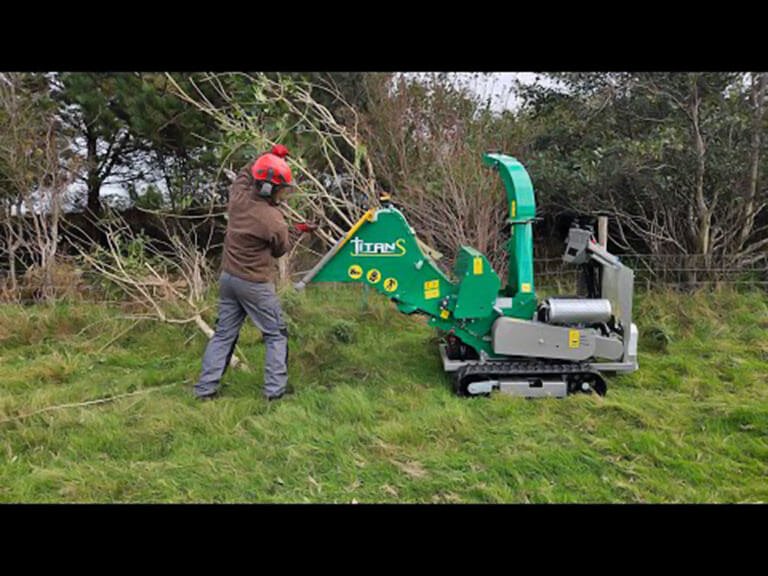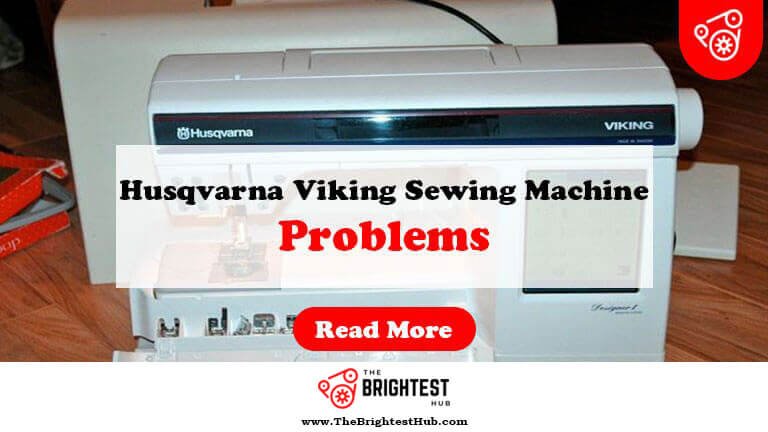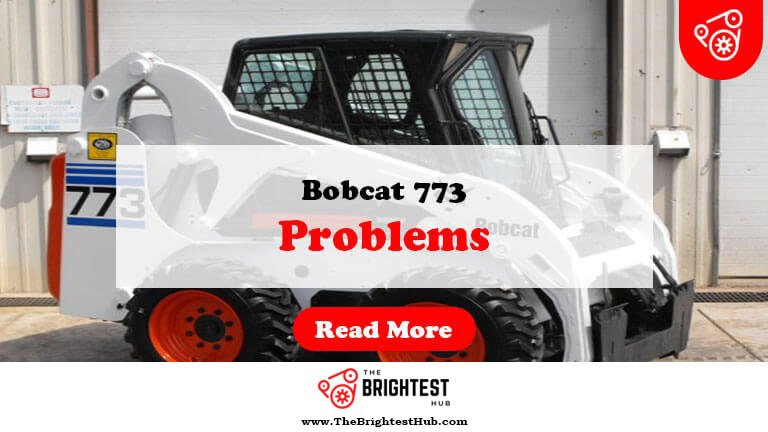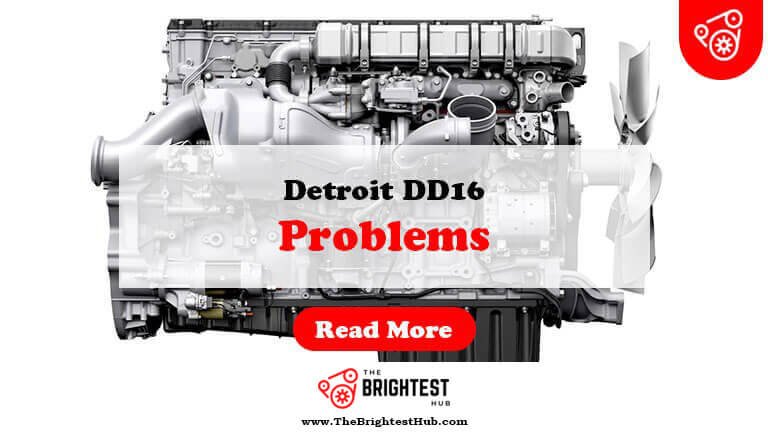Wood Chipper Feed Roller Problems: Quick Fixes & Tips
Wood chipper feed roller problems often stem from improper alignment or worn-out components. Regular maintenance can prevent these issues and ensure optimal performance.
Wood chippers are essential tools for managing yard waste and maintaining landscapes. The feed roller plays a crucial role in guiding materials into the chipper. Problems with the feed roller can disrupt operations and lead to inefficiency. Common issues include misalignment, wear and tear, and debris accumulation.
Understanding these challenges is vital for effective wood chipper maintenance. Proper care and timely repairs can enhance the lifespan of your equipment. Regular inspections and adjustments can also prevent costly breakdowns. By addressing feed roller problems promptly, you ensure your wood chipper operates smoothly and efficiently, saving time and effort in yard cleanup tasks.
Introduction To Wood Chipper Feed Roller Issues

Wood chipper feed rollers play a crucial role in processing wood. They help in pulling branches and debris into the chipper. Problems with feed rollers can lead to inefficiency and damage. Understanding these issues can save time and money.
Common Symptoms Of Feed Roller Problems
Identifying feed roller problems early is essential. Here are some common symptoms:
- Sluggish Performance: The chipper operates slower than usual.
- Uneven Feeding: Material feeds in irregularly or stops.
- Strange Noises: Grinding or clanking sounds during operation.
- Excessive Vibration: The machine shakes more than normal.
- Visible Wear: Signs of wear on rollers or belts.
Importance Of Timely Maintenance
Regular maintenance of feed rollers prevents serious issues. Timely checks can enhance performance. Here’s why maintenance is important:
| Benefit | Description |
|---|---|
| Increased Lifespan | Proper care extends the life of the chipper. |
| Cost Savings | Preventing problems saves repair costs. |
| Improved Efficiency | Well-maintained rollers enhance chipper performance. |
| Safety | Regular checks reduce the risk of accidents. |
Establish a routine for inspecting the feed rollers. This will help catch issues early. Keeping your chipper in top shape ensures smooth operation.
Identifying The Problem
Wood chipper feed roller problems can disrupt your work. Identifying issues early helps prevent further damage. Use simple techniques to spot problems. Focus on visual cues and sounds.
Visual Inspection Techniques
Start with a detailed visual inspection. Look for signs of wear and tear. Check the following areas:
- Roller Surface: Inspect for cracks or dents.
- Feed Mechanism: Ensure no debris is blocking.
- Belts and Chains: Look for fraying or looseness.
- Alignment: Check if rollers are aligned properly.
Use a flashlight to see hidden areas. Clean the feed roller to spot issues easily.
Listening For Unusual Sounds
Sounds can reveal hidden problems. Pay attention to these noises:
| Sound | Possible Issue |
|---|---|
| Grinding | Worn bearings or damaged rollers |
| Clunking | Loose parts or misaligned rollers |
| High-pitched whine | Friction from misalignment |
Turn on the chipper and listen carefully. Unusual sounds indicate the need for inspection.
Quick Fixes For Jammed Rollers
Jammed feed rollers can disrupt your wood chipper’s operation. Quick fixes can save time and effort. Here are effective steps to tackle this problem.
Clearing Debris And Obstructions
Debris often causes jammed rollers. Follow these steps to clear obstructions:
- Turn off the wood chipper and unplug it.
- Wear protective gloves and goggles.
- Check the feed roller area for any visible debris.
- Use a sturdy stick or a long tool to dislodge material.
- Remove any tangled branches or leaves carefully.
Ensure no foreign objects remain in the feed area. This will prevent future jams.
Resetting The Feed Roller Mechanism
Resetting the feed roller can resolve many issues. Here’s how to do it:
- Locate the reset button on your wood chipper.
- Press the reset button firmly.
- Check for any visible damage to the feed roller.
- Re-test the machine to see if it operates smoothly.
Regular resets help maintain the equipment. It ensures the rollers function correctly.
Adjusting Roller Pressure
Adjusting roller pressure is crucial for your wood chipper’s efficiency. Proper roller pressure ensures smooth feeding of materials. Incorrect settings can lead to blockages or poor performance. Follow the right steps to keep your machine running optimally.
Steps For Proper Adjustment
- Turn off the wood chipper and unplug it.
- Locate the roller adjustment knobs or bolts.
- Loosen the adjustment mechanism slightly.
- Align the rollers according to the manufacturer’s specifications.
- Tighten the adjustment mechanism securely.
- Test the roller pressure by feeding material.
- Repeat adjustments as necessary.
Balancing Roller Tension
Balancing roller tension is vital for efficient operation. Follow these tips:
- Check both rollers for even tension.
- Adjust until both sides pull equally.
- Inspect for wear and replace if needed.
| Roller Position | Recommended Tension | Adjustment Method |
|---|---|---|
| Left Roller | 10-15 PSI | Turn left knob clockwise |
| Right Roller | 10-15 PSI | Turn right knob clockwise |
Regular checks keep your wood chipper running smoothly. Proper adjustment prevents damage and enhances performance.
Replacing Worn Parts
Replacing worn parts on your wood chipper is essential. It keeps your machine running efficiently. Worn parts can cause malfunctions, leading to poor performance. Regular maintenance helps you avoid costly repairs.
Identifying Parts Needing Replacement
Identify worn parts to maintain your wood chipper. Look for signs of damage or wear. Here are common parts that may need replacement:
- Feed Roller: Check for cracks or uneven surfaces.
- Blades: Dull or chipped blades require replacement.
- Bearings: Listen for unusual noises indicating wear.
- Belts: Inspect for fraying or cracking.
Regularly inspect these components. Early detection prevents bigger problems.
Step-by-step Guide To Replacing Components
Follow these steps to replace worn parts:
- Gather Tools: Prepare necessary tools like wrenches and screwdrivers.
- Power Off: Disconnect the wood chipper from the power source.
- Remove Cover: Use a screwdriver to take off the cover carefully.
- Inspect Parts: Look closely at the feed roller and other components.
- Remove Worn Parts: Unscrew and take out damaged parts.
- Install New Parts: Place new components in their spots. Ensure a snug fit.
- Reattach Cover: Secure the cover back in place.
- Test the Machine: Reconnect power and test the wood chipper.
Regular maintenance extends the life of your wood chipper. Stay proactive to ensure smooth operation.
Lubrication For Smooth Operation
Proper lubrication is crucial for the performance of wood chipper feed rollers. It ensures smooth operation and prevents wear and tear. Regular maintenance keeps the machine running effectively. Neglecting lubrication can lead to serious problems.
Choosing The Right Lubricant
Selecting the appropriate lubricant is vital. The right lubricant reduces friction and heat. Here are some types:
- Grease: Good for high-load applications.
- Oil: Ideal for moving parts.
- Graphite: Helpful in high-temperature situations.
Check the manufacturer’s recommendations. Use only high-quality products. Avoid mixing different types of lubricants.
Lubrication Frequency And Techniques
Regular lubrication keeps your wood chipper in top shape. Follow these guidelines:
- Daily: Inspect and lubricate moving parts.
- Weekly: Check grease levels in bearings.
- Monthly: Clean and lubricate feed rollers.
Use a grease gun or oil can for application. Ensure even coverage. Avoid over-lubrication to prevent dirt accumulation.
Check for signs of wear. Listen for unusual noises. Address problems immediately.
| Lubrication Schedule | Task |
|---|---|
| Daily | Inspect and lubricate moving parts |
| Weekly | Check grease levels in bearings |
| Monthly | Clean and lubricate feed rollers |
Electrical Issues And Solutions
Wood chipper feed rollers face various electrical issues. Understanding these problems helps in quick fixes. This section covers troubleshooting methods and when to seek professional help.
Troubleshooting Electrical Faults
Electrical faults can halt your wood chipper’s performance. Here are common issues and steps to resolve them:
- Power Supply Problems: Check if the chipper is plugged in. Ensure the outlet works.
- Faulty Switch: Inspect the power switch for damage. Replace it if necessary.
- Blown Fuses: Check for blown fuses in the electrical panel. Replace with the same amperage.
- Wiring Issues: Look for frayed wires. Repair or replace any damaged wiring.
- Motor Failures: Listen for unusual sounds from the motor. If it overheats, let it cool and check for blockages.
| Issue | Possible Cause | Solution |
|---|---|---|
| Power Failure | No power supply | Check the outlet and plug connections |
| Switch Malfunction | Damaged switch | Replace the switch |
| Motor Stops | Overheating | Allow cooling and check for debris |
When To Call A Professional
Some electrical issues require expert attention. Know when to seek help:
- Complex wiring problems
- Persistent motor issues
- Repeated blown fuses
- Electrical shocks when operating
- Inability to diagnose the issue
Safety is crucial. Professionals ensure repairs follow safety standards.
Preventive Maintenance Tips
Preventive maintenance keeps your wood chipper feed rollers in top shape. Regular care helps avoid costly repairs and downtime. Here are practical tips to maintain your equipment effectively.
Regular Maintenance Schedule
Establish a routine for checking and servicing your feed rollers. A regular maintenance schedule can prevent major problems. Follow these steps:
- Inspect feed rollers every week.
- Clean rollers to remove debris.
- Check for wear and tear monthly.
- Lubricate moving parts regularly.
Consider using a maintenance log. Track inspections and repairs. This helps spot patterns over time.
| Maintenance Task | Frequency |
|---|---|
| Visual Inspection | Weekly |
| Cleaning | Weekly |
| Wear Check | Monthly |
| Lubrication | Every 50 hours |
Long-term Care For Feed Rollers
Long-term care ensures your feed rollers last longer. Follow these practices:
- Store the chipper in a dry place.
- Protect rollers from rust with anti-corrosion spray.
- Replace worn parts promptly.
- Use original parts for replacements.
Training staff on proper handling helps reduce damage. Share this information with everyone who uses the chipper.
Regular maintenance and care prolong the life of your wood chipper feed rollers. These steps save time and money.
Safety Considerations
Wood chippers can be dangerous. Proper safety measures are essential. Understanding how to use them safely helps prevent injuries.
Safety Gear And Precautions
Wearing the right safety gear is crucial. Here are some essential items:
- Safety goggles: Protects eyes from flying debris.
- Ear protection: Reduces noise exposure.
- Gloves: Offers grip and hand protection.
- Steel-toed boots: Protects feet from heavy objects.
- Hard hat: Shields head from falling branches.
Before starting the wood chipper, check these precautions:
- Inspect the chipper for any damage.
- Ensure the area is clear of bystanders.
- Know the machine’s controls and emergency shut-off.
- Keep hands and feet away from the feed roller.
- Do not wear loose clothing or jewelry.
Operating Wood Chipper Safely
Safe operation is vital to prevent accidents. Follow these guidelines:
- Always read the user manual.
- Start the machine according to instructions.
- Feed branches and debris slowly into the roller.
- Never attempt to clear jams with hands.
- Shut off the machine before servicing.
Keep the following tips in mind:
| Tip | Description |
|---|---|
| Stay Alert | Focus on the task and avoid distractions. |
| Work in Pairs | Having a partner can improve safety. |
| Know Your Limits | Don’t overwork yourself. Take breaks. |
Follow these safety considerations. They help ensure a safe and productive experience. Stay safe and enjoy your wood chipping!
Professional Help Vs. Diy
Wood chipper feed roller problems can be tricky. Choosing between professional help and DIY repairs can be challenging. Each option has its benefits. Understanding when to seek help saves time and effort.
When To Seek Professional Repair
Some signs indicate it’s time to call a professional:
- Complex Issues: If the problem involves electrical parts.
- Safety Concerns: If you feel unsure about handling sharp blades.
- Time Constraints: If you need the chipper back quickly.
- Frequent Breakdowns: If issues keep recurring despite repairs.
- Warranty Considerations: If the chipper is still under warranty.
Professionals have the tools and experience. They can diagnose issues quickly. This can prevent further damage.
Resources For Diy Enthusiasts
DIY repairs can be rewarding. Here are some resources to help:
| Resource Type | Description | Where to Find |
|---|---|---|
| Instruction Manuals | Guides specific to your wood chipper model. | Manufacturer’s website or included with the chipper. |
| YouTube Tutorials | Visual guides for common repairs. | YouTube search for wood chipper repairs. |
| Online Forums | Communities sharing tips and experiences. | Reddit or woodworking forums. |
| Parts Suppliers | Online shops for replacement parts. | Amazon, eBay, or specific parts retailers. |
Use these resources to troubleshoot problems. Start with simple fixes before moving to complex issues. Always prioritize safety during repairs.
Frequently Asked Questions
What Are Common Wood Chipper Feed Roller Issues?
Common issues include jams, uneven feeding, and wear on the roller that can affect performance.
How Can I Fix A Jammed Feed Roller?
Check for debris, clear blockages, and ensure proper alignment to resolve a jammed feed roller.
Why Does My Wood Chipper Feed Roller Skip?
Skipping often results from worn gears or misalignment, preventing consistent rotation and feeding of material.
How Can I Maintain My Feed Roller?
Regular cleaning, lubrication, and inspection for wear can significantly enhance the life of your feed roller.
What Signs Indicate Feed Roller Replacement?
Signs include excessive wear, inconsistent feeding, and visible damage, indicating it’s time for a replacement.
Conclusion
Understanding wood chipper feed roller problems is essential for maintaining your equipment. Regular inspections can prevent major issues. Always address minor problems before they escalate. Proper maintenance ensures optimal performance and longevity. Stay informed and proactive to keep your wood chipper running smoothly.
Your efforts will pay off in the long run.






